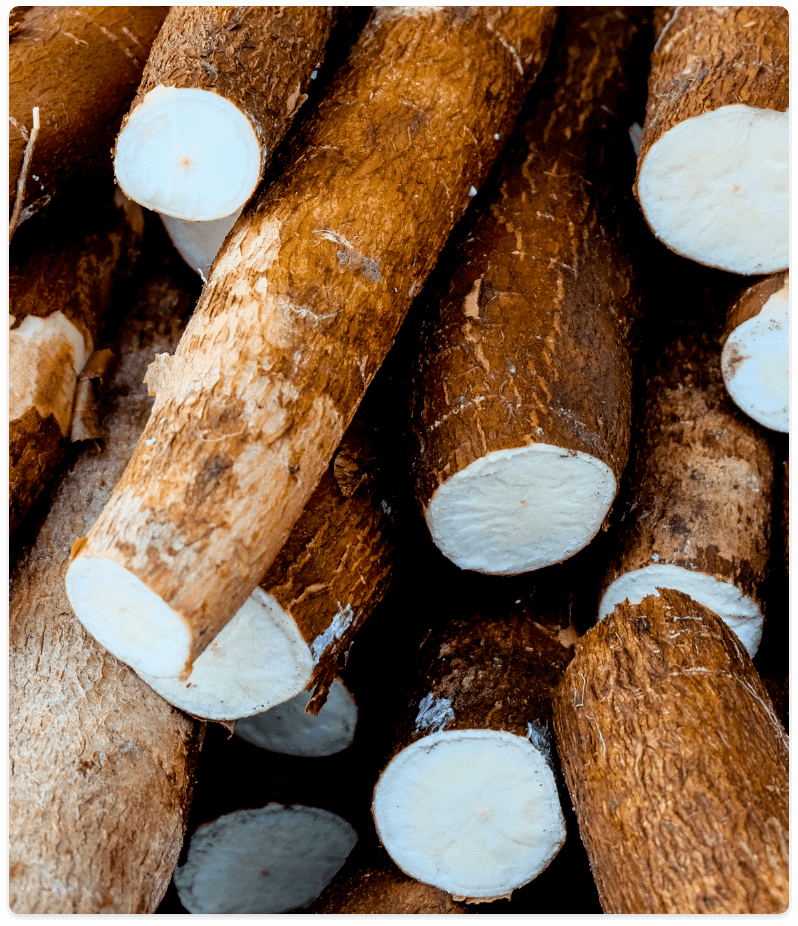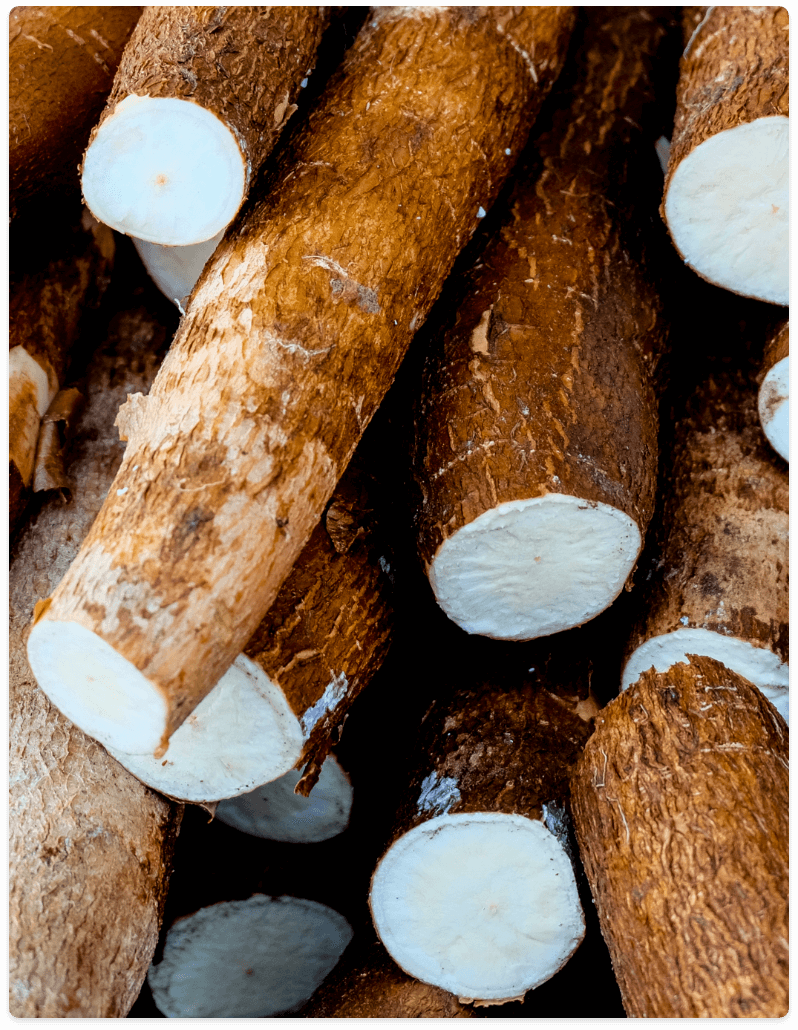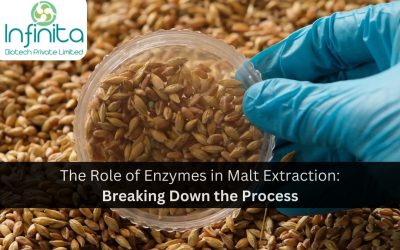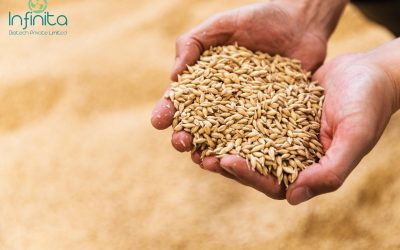Starch Processing Enzymes Manufacturer

Starch Processing Enzymes is a process to recover starch from plant sources which contain starch, such as Corn, Potatoes, Wheat, Cassava, Rice and Sorghum. In this process, wet milling of grain followed by slurry formation takes place. This starch-rich slurry is spread dried to recover starch as powder. Mostly in starch processing mills, this starch slurry is liquefied and saccharified to obtain different products like Maltodextrins, High-purity Maltose, Liquid Glucose and Dextrose powder.
In the past, strong acids had to be used to separate the starch into individual sugars, whereas today almost only enzymes are used. They offer a number of advantages: Since Starch Processing Enzymes break down the branched starch molecules at very specific points, the saccharification process can be specifically controlled. In this way, different starch syrups are obtained, which differ in their sweetening power, but also in their technological properties.
Enzymes for Starch Processing is a process to recover starch from plant sources which contain starch, such as Corn, Potatoes, Wheat, Cassava, Rice and Sorghum. In this process, wet milling of grain followed by slurry formation takes place. This starch-rich slurry is spread dried to recover starch as powder. Mostly in starch processing mills, this starch slurry is liquefied and saccharified to obtain different products like Maltodextrins, High-purity Maltose, Liquid Glucose and Dextrose powder.
In the past, strong acids had to be used to separate the starch into individual sugars, whereas today almost only enzymes are used. They offer a number of advantages: Since Enzymes for Starch Processing break down the branched starch molecules at very specific points, the saccharification process can be specifically controlled. In this way, different starch syrups are obtained, which differ in their sweetening power, but also in their technological properties.

Our Solutions
ALPHA AMYLASE FOR LIQUEFACTION
This high temperature Alpha Amylase convert Starch into Dextrin.

Reduces Viscosity

Dextrins Generation

Free Sugar
Generation

Reduces Viscocsity

Dextrins Generation

Free Sugar Generation
BETA AMYLASE
Our Beta Amylase can be used for the production of Maltose Syrup.

Maltose
Generation

De-branchng Of
Dextrins

Reduces Viscosity

Maltose Generation

De-branchng Of Dextrins

Reduces Viscosity
GLUCO AMYLASE FOR SACCHARIFICATION
Our Gluco Amylase is useful for converting Dextrin into Glucose.

High Glucose Syrup

Pullanase Activity

Thermal And Ph Stability

High Glucose Syrup

Pullanase Activity

Thermal And Ph Stability
PULLULANASE
Enzyme to hydrolyze pullulan, a component of starch, into smaller glucose units.

Reduces viscosity in processing

Improves process efficiency

Reduces processing time

Reduces viscosity in processing

Improves process efficiency

Reduces processing time
Related Articles
The Future of Biofuels: Enzymatic Solutions in Biodiesel Production Exploring the role of enzymes in the production of biodiesel and its impact on the energy sector.
Biofuels have emerged as a promising solution to combat climate change and reduce our dependence on fossil fuels. With advancements in technology, enzymatic solutions are revolutionizing the production of biodiesel, offering a more efficient and sustainable...
The Role of Enzymes in Malt Extraction: Breaking Down the Process
Malt extraction is a crucial step in the brewing process. It involves breaking down the complex carbohydrates in malted grains to release fermentable sugars. This process is made possible with the help of enzymes, which are biological catalysts that speed up chemical...
How Malting Process in Brewing Industry Works?
Malting is a process through which different grains, especially barley, are prepared for brewing through a controlled germination process in a humid environment. Many other grains can be used for malting which can include sorghum, wheat, oats, rye, corn among others....
FAQ’S
Which enzymes are used in starch processing?
There are a few different types of enzymes used by enzyme industries in India for starch processing also called grain processing enzymes. The most common are alpha-amylases, beta-amylase, pullanase and glucoamylases. These enzymes for starch processing help to break down the starch into smaller molecules, which makes it easier to process.
Which enzyme convert starch to Maltose?
The enzyme used in the hydrolysis of starch to dextrin and maltose is Beta amylase.
What is the function of glucoamylase?
Glucoamylase is an enzyme that catalyzes the conversion of dextrin enzyme to glucose. Dextrin is a complex carbohydrate made up of many glucose molecules bonded together. Glucoamylase breaks the bonds between the glucose molecules, freeing up the individual glucose molecules.
Which type of enzyme is used to convert starch into sugar syrup?
The process of converting starch into glucose is called glycolysis. The enzyme that catalyzes this reaction is called amylase. The starch molecule is broken down into smaller molecules called maltose. These maltose molecules are further broken down into glucose molecules. Glucose is then transported across the cell membrane and turned into energy by the cells.
What is wet milling process?
The wet milling process uses water to extract the starch and other nutrients from the grain using wet miller enzymes. The resulting slurry is then passed through a series of screens to separate the solids from the liquids. The liquids are then boiled to create a syrup, which is used to produce foods like high fructose corn syrup, dextrose, maltose etc
Looking For Enzymes?
We’re Here To Help
Looking For Enzymes?
We’re Here To Help
QUICK LINKS
HOME
ABOUT
CERTIFICATIONS
BLOGS
MEDIA
CAREERS
FAQs
CONTACT
PRODUCTS
© 2024, Infinita Biotech Private Limited. All rights reserved.
Designed by Kerkar Media



